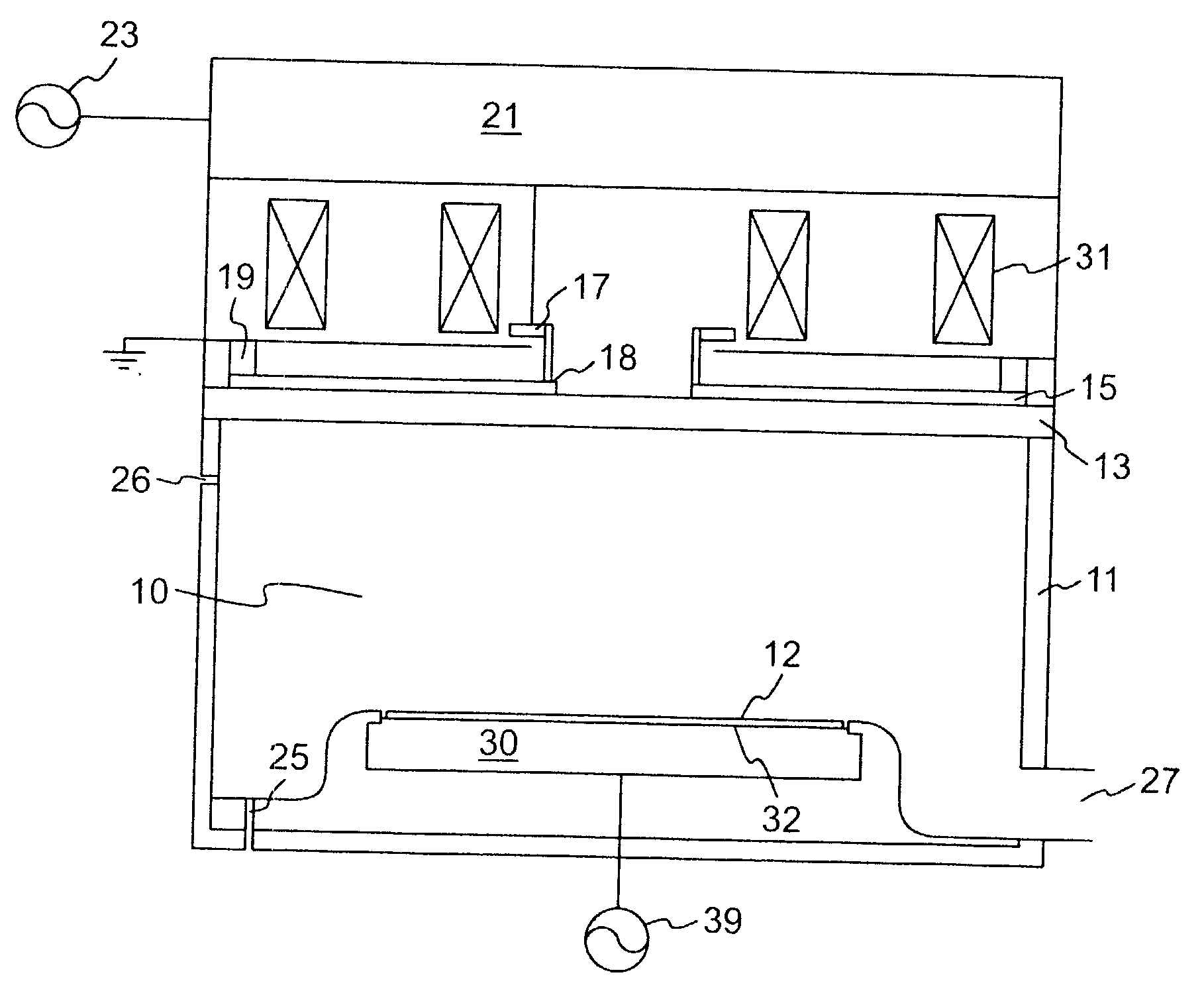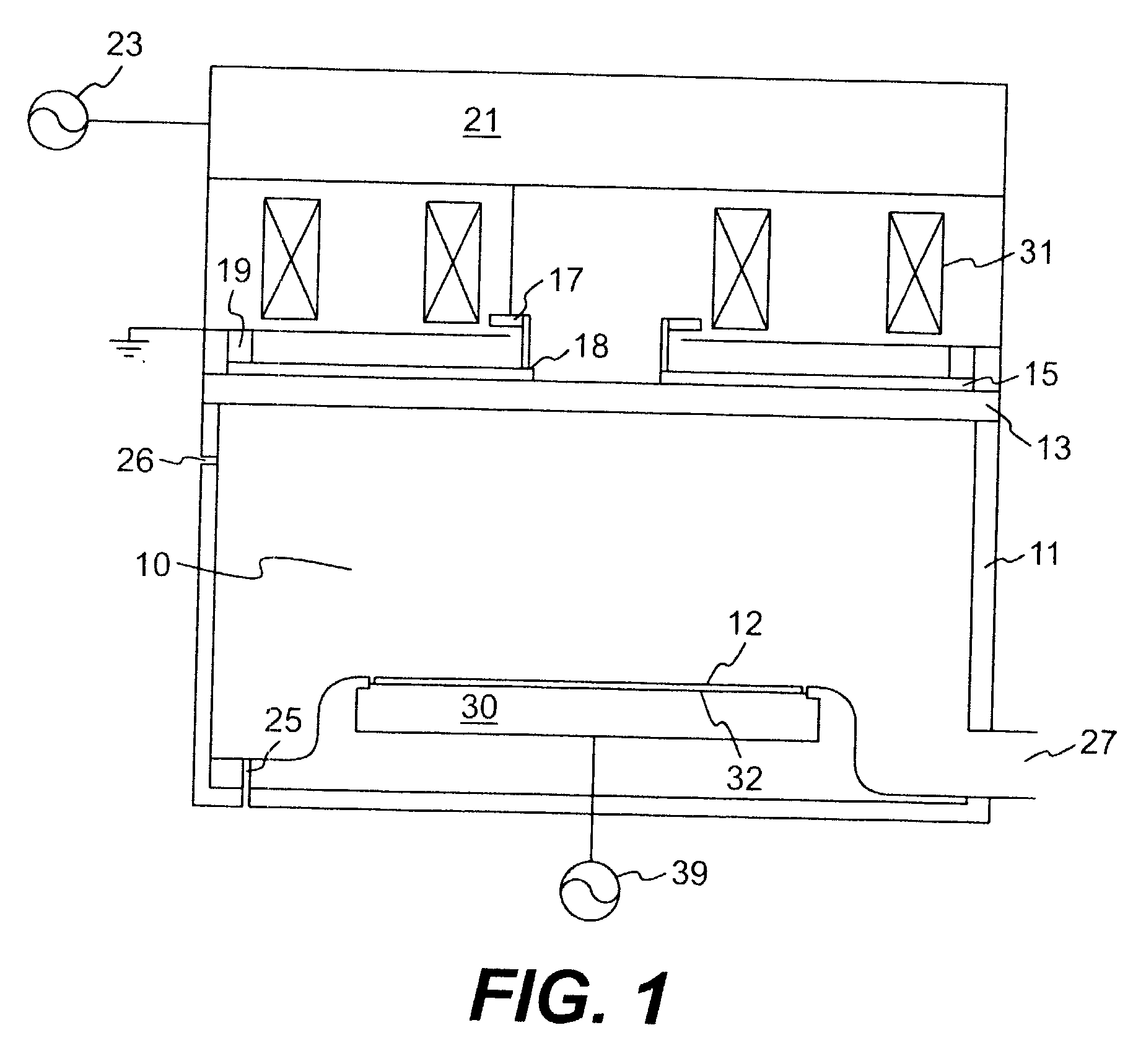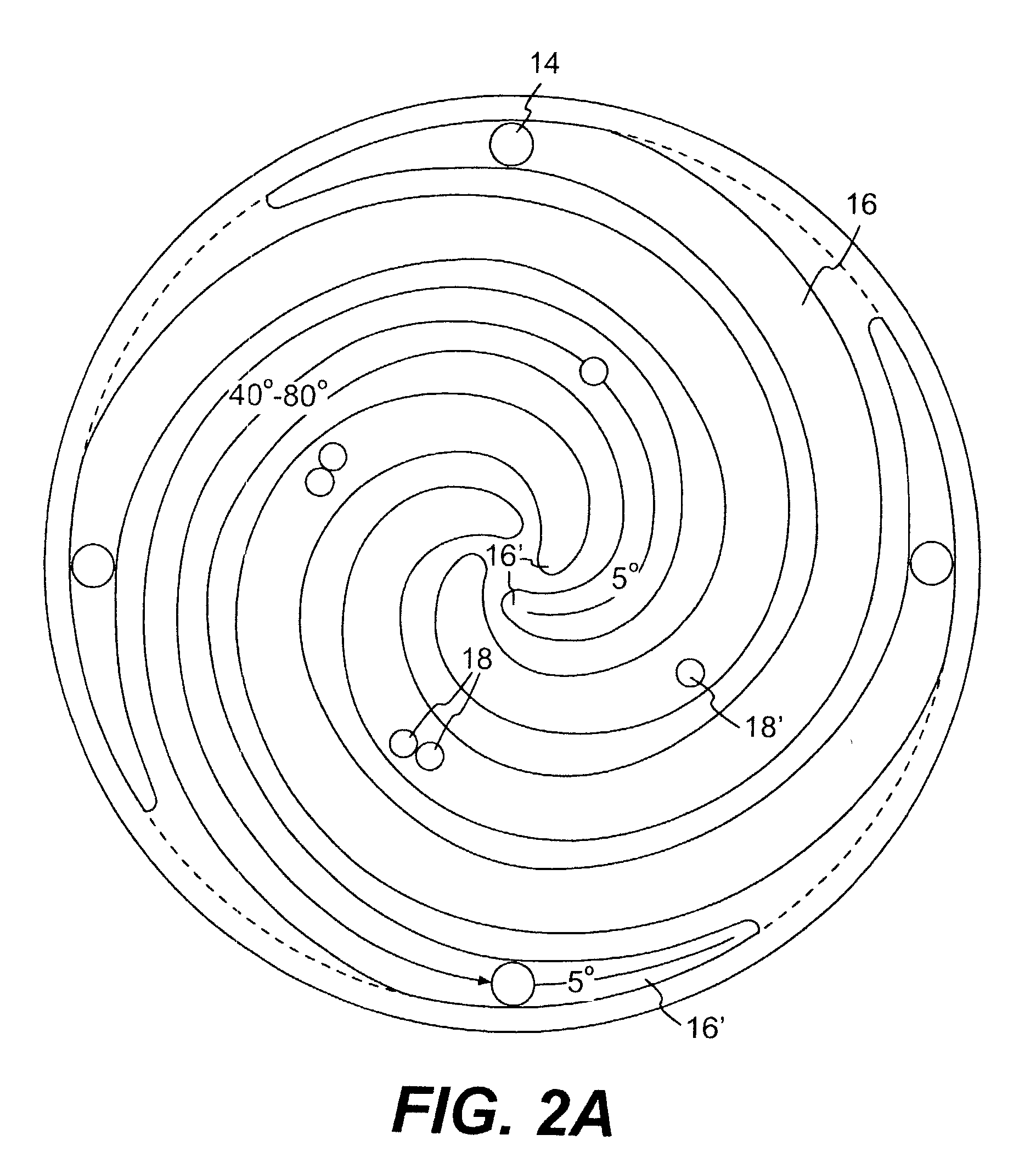Plasma reactor with high selectivity and reduced damage
a plasma processing reactor and high selectivity technology, applied in the direction of electrical equipment, basic electric elements, electric discharge tubes, etc., can solve the problems of charge build-up, breakdown and damage of thin oxide films, and many types of structures become much more subject to damag
- Summary
- Abstract
- Description
- Claims
- Application Information
AI Technical Summary
Benefits of technology
Problems solved by technology
Method used
Image
Examples
Embodiment Construction
[0028] Referring now to the drawings, and more particularly to FIG. 1, there is shown a cross-sectional side view of a reactor vessel in accordance with the invention. It should be understood that many of the elements of the plasma reactor vessel are common to known plasma reactor vessels and are well-understood by those skilled in the art. Details of the plasma reactor vessel and known elements thereof are not critical to the practice of the invention and will be briefly summarized. This particular embodiment of the invention is suitable for use at pressures of above 10 mTorr characteristic of older plasma reactor vessels having lower pumping speed than current reactor vessel arrangements but can also be used at lower pressures as well.
[0029] Specifically, the reactor vessel includes walls 11 defining a chamber or cavity 10. A vacuum pump is connected to outlet duct 27 to maintain a high level of vacuum in the cavity 10 while reactant / etchant gas is supplied through one or more inl...
PUM
| Property | Measurement | Unit |
|---|---|---|
| Power | aaaaa | aaaaa |
| Magnetic field | aaaaa | aaaaa |
| Density | aaaaa | aaaaa |
Abstract
Description
Claims
Application Information
 Login to View More
Login to View More - R&D Engineer
- R&D Manager
- IP Professional
- Industry Leading Data Capabilities
- Powerful AI technology
- Patent DNA Extraction
Browse by: Latest US Patents, China's latest patents, Technical Efficacy Thesaurus, Application Domain, Technology Topic, Popular Technical Reports.
© 2024 PatSnap. All rights reserved.Legal|Privacy policy|Modern Slavery Act Transparency Statement|Sitemap|About US| Contact US: help@patsnap.com










